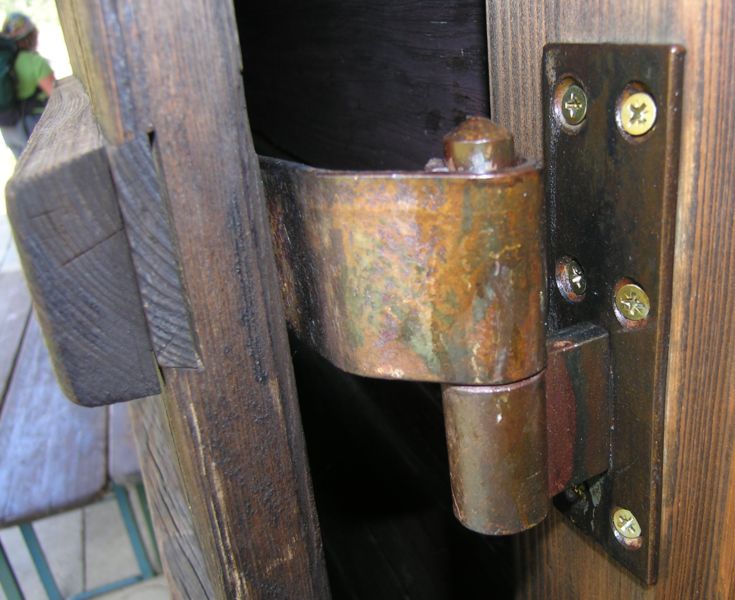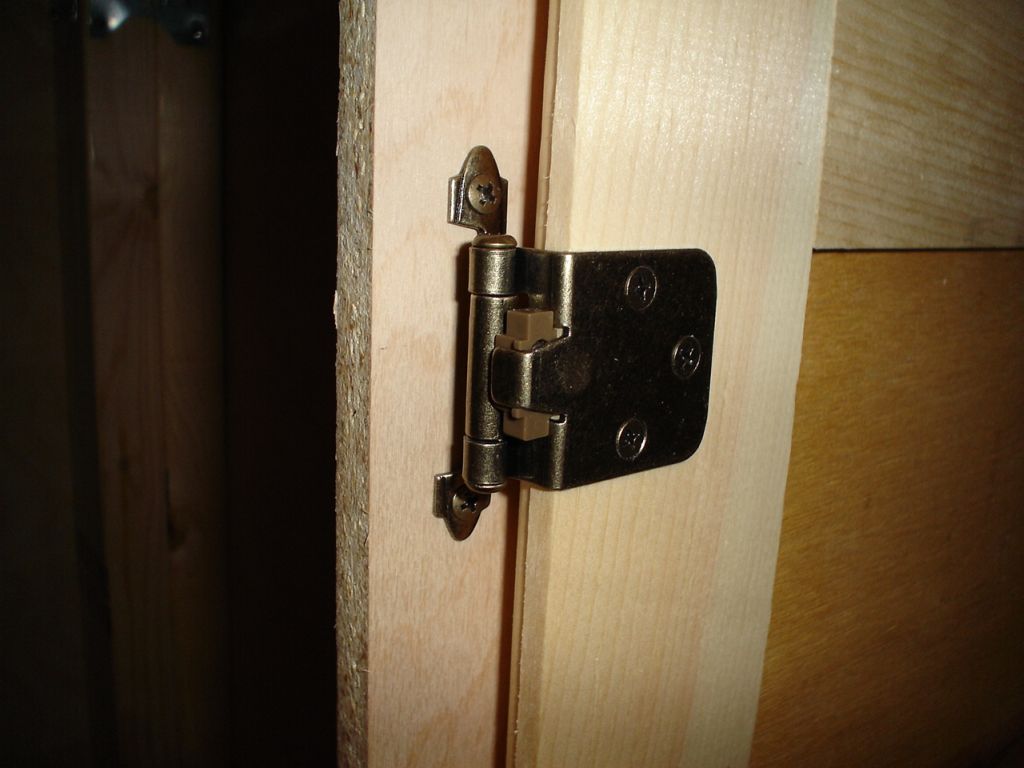Think about the shelving and storage projects you have built. How many were built to remain as open shelves? Sure, lots of bookcases are open. And some curio shelves.
 However, when you get into entertainment centers, kitchen cabinets and other projects, doors become important design elements. I was terrified when I had to build my first doors, but that was the easy part. Selecting the hinge hardware was actually one of the tougher decisions I had to make.
However, when you get into entertainment centers, kitchen cabinets and other projects, doors become important design elements. I was terrified when I had to build my first doors, but that was the easy part. Selecting the hinge hardware was actually one of the tougher decisions I had to make.
Hinges have been around since the earliest structures were built. Tired of having to push and drag a cover to protect an entryway, early builders struck on the idea of attaching the door to one side of the entryway and having it pivot. Some stone pivot hinges can still be found – fully operational – in ancient stone structures.
 As building techniques progressed, more sophisticated hinge designs came into play. The technology to forge bronze, then iron, gave builders a wider selection from which to choose. The hinges forged by these smiths were both beautiful and durable, and can serve archaeologists well in helping to identify the date a particular structure was built.
As building techniques progressed, more sophisticated hinge designs came into play. The technology to forge bronze, then iron, gave builders a wider selection from which to choose. The hinges forged by these smiths were both beautiful and durable, and can serve archaeologists well in helping to identify the date a particular structure was built.
Today, forged and stamped hinges come in a bewildering number of styles for many applications. And, while there are thousands – or tens of thousands – of different looks, they break down into three broad families:
- Mortised: These hinges require that part of the hinge body be mortised into the project to get better support. Butt hinges and European cup hinges are two of the more popular varieties of this style hinge. Regardless of what tool is required to cut the mortise – chisel, router, hollow-chisel mortiser, biscuit joiner… they all fit in this family.
- Non-Mortised: Obviously, this family doesn’t require mortising – they gain all of their strength from either screws, spikes or some other metal-to-wood connection. Sophisticated non-mortising hinges, cranked leaf hinges found on kitchen cabinet doors and old time H and strap hinges show up here.
- Non-Metallic: This category is a bit of a catch-all for the different styles of hinges that can be crafted by a woodworker. Wooden knuckle joints, leather straps or the like can serve as outstanding and decorative joints, showing off the skill of the woodworker.

What kinds of hinges do I use? Well, I have a few favorites I tend to go to time and again:
Blum Concealed Hinges: When you don’t want the hinge to show, it’s hard to go wrong with these hinges. They do take some getting used to if you have never installed them before, but WOW, do they ever work smoothly. Installation does involve a 35 mm diameter forstner bit, so you will have to lay out some money to get that. But, that cup that is drilled works as a mortise for the door, giving outstanding support. Have your project plans handy, because you can buy these hinges in many different flavors – face frame vs. frameless, inset vs. overlay, etc. – and you want to order them properly.
Overlay Door Hinges: I love these hinges to death. The cranked leaf that mounts to the face frame of the door has a preset overlay amount. So, if you have hinges with a 1/2″ offset, just build your door an inch wider than the opening and you will have a perfectly fitting overlay door. I have used these hinges for years and they tend to be my ‘go to’ style for lots of projects.
No-Mortise Hinges: Very easy to work with – and very similar to the overlay hinges mentioned above. These work for inset doors and are very easy to install.
Pin Hinges: If I am building a small box and need an unobtrusive hinge, this is what I choose. Easily installed with a drill and a dowel center, these babies function easily and have never failed me.
The best advice for hinge selection is to do your homework. Go through a home-improvement center’s kitchen cabinet display and open the doors. Go to a furniture showroom and see how their doors are hung. Read up on Internet reviews of different hinge styles and see what is out there.
It just might open a few doors for you!
